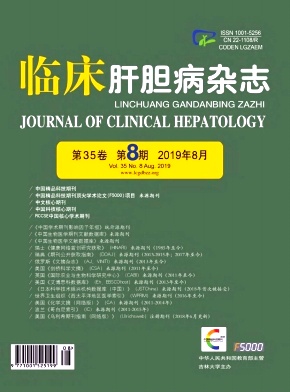|
[1] CHEN Q, ZHANG Y, YUE ZD, et al. Clinical efficacy of transjugular intrahepatic portosystemic shunting for recurrent portal hypertension after liver transplantation[J]. Chin J Dig Surg, 2018, 17 (10) :1013-1017. (in Chinese) 陈权, 张裕, 岳振东, 等.经颈静脉肝内门体分流术治疗肝移植术后再发门静脉高压症的临床疗效[J].中华消化外科杂志, 2018, 17 (10) :1013-1017.
|
|
[2] DING ZF, YIN SW. Application of Viatorr covered stent in transjugular intrahepatic portosystemic shunt[J]. J Clin Hepatol, 2018, 34 (5) :1107-1110. (in Chinese) 丁智锋, 殷世武. Viatorr覆膜支架在经颈静脉肝内门体分流术中的应用现状[J].临床肝胆病杂志, 2018, 34 (5) :1107-1110.
|
|
[3] ROSSLE M. TIPS:25 years later[J]. J Hepatol, 2013, 59 (5) :1081-1093.
|
|
[4] RIGGIO O, ANGELONI S, SALVATORI M, et al. Incidence, natural history, and risk factors of hepatic encephalopathy after transjugular intrahepatic portosystemic shunt with polytetrafluoroethylene-covered stent grafts[J]. Am J Gastroenterol, 2008, 103 (11) :2738-2746.
|
|
[5] RIGGIO O, MASINI A, EFRATI C, et al. Pharmacological prophylaxis of hepatic encephalopathy after transjugular intrahepatic portosystemic shunt:A randomized controlled study[J]. J Hepatol, 2005, 42 (5) :674-679.
|
|
[6] CHU JG, SUN XL, PIAO LS, et al. The reducing stent:Treatment for transjugular intrahepatic portosystemic shunt-induced refractory hepatic encephalopathy[J]. J General Hospital Air Force, PLA, 2002, 18 (3) :125-128. (in Chinese) 褚建国, 孙晓丽, 朴龙松, 等.限流支架植入治疗TIPS引起的难治性肝性脑病[J].空军总医院学报, 2002, 18 (3) :125-128.
|
|
[7] VILSTRUP H, AMODIO P, BAJAJ J, et al. Hepatic encephalopathy in chronic liver disease:2014 practice guideline by the American Association for the Study of Liver Diseases and the European Association for the Study of the Liver[J]. Hepatology, 2014, 60 (2) :715-735.
|
|
[8] BAI M, QI X, YANG Z, et al. Predictors of hepatic encephalopathy after transjugular intrahepatic portosystemic shunt in cirrhotic patients:A systematic review[J]. J Gastroenterol Hepatol, 2011, 26 (6) :943-951.
|
|
[9] PEREIRA K, CARRION AF, MARTIN P, et al. Current diagnosis and management of post-transjugular intrahepatic portosystemic shunt refractory hepatic encephalopathy[J]. Liver Int, 2015, 35 (12) :2487-2494.
|
|
[10] WANG Q, LV Y, BAI M, et al. Eight millimeter covered TIPS does not compromise shunt function but reduces hepatic encephalopathy in preventing variceal rebleeding[J]. J Hepatol, 2017, 67 (3) :508-516.
|
|
[11] GARCIA-PAGAN JC, CACA K, BUREAU C, et al. Early use of TIPS in patients with cirrhosis and variceal bleeding[J]. N Engl J Med, 2010, 362 (25) :2370-2379.
|







 DownLoad:
DownLoad: